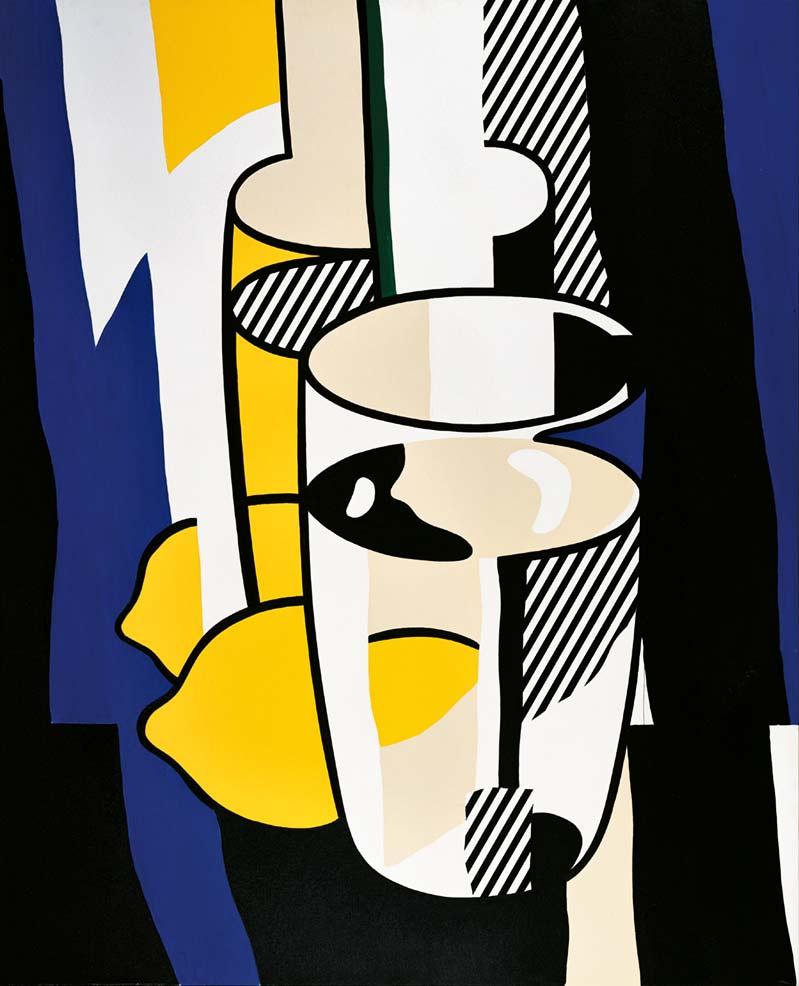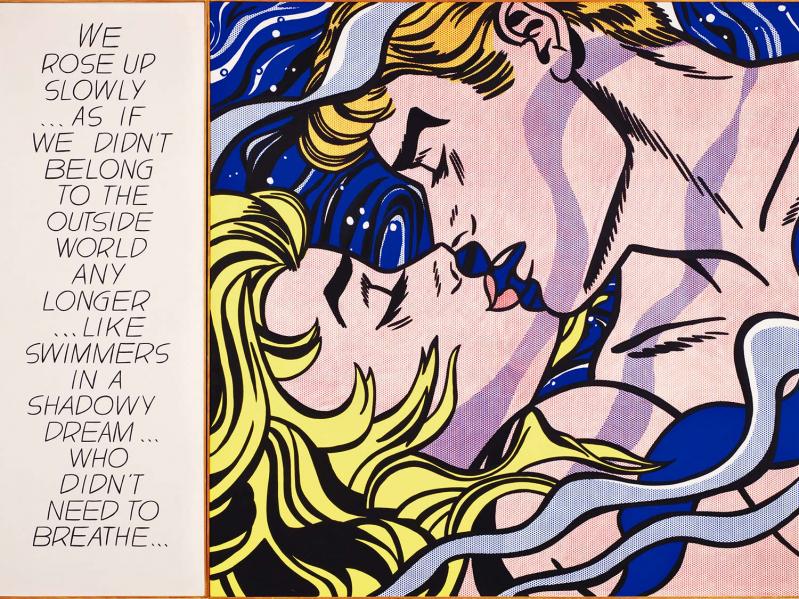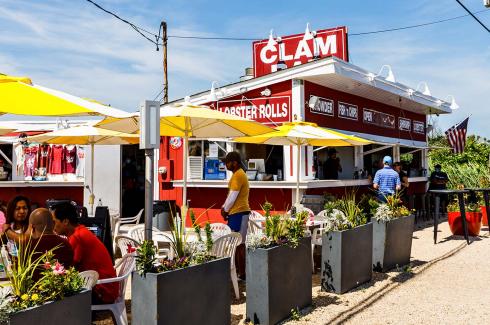"What can you paint that isn't ridiculous from the outset?"
— Roy Lichtenstein
Roy Lichtenstein would have been 100 last October, and the commemorations continue. The latest, a retrospective exhibition at the Albertina Museum in Vienna, will be on view through mid-July.
Why Vienna? Why the Albertina? At least one reason is the large gift of artworks the Roy Lichtenstein Foundation gave the museum last year. With its plans to open a facility to show large-scale modern and contemporary art, the 95 Lichtenstein sculptures, studies, maquettes, and fiber works recently added to the collection builds on a base of 34 works on paper the museum already possessed.
The foundation's work has culminated in a catalogue raisonné for the artist, who lived full time in Southampton for much of his life. Released in October, it is available in its entirety online at lichtensteincatalogue.org. The foundation gave the Whitney Museum of American Art first pick of what was left in its archive when it announced it would wind down back in 2018.
The Lichtenstein family decided to donate the building that was once the artist's New York City studio and residence to the Whitney as well. The museum has been using it as the headquarters for its Independent Study Program. The facility's renovations for its new role were also unveiled at the time of the artist's birthday celebrations. The Whitney plans its own Lichtenstein retrospective for 2026.
So, for now, it's the Albertina. In its centennial commemoration, the museum has chosen 100 works it deems "the most striking and significant paintings, sculptures, and works on paper ranging all the way from pop art's beginnings in the 1960s to the artist's late oeuvre." It has drawn loans from museum collections the world over, including the Whitney, the Museum of Modern Art, the National Gallery of Art in Washington, D.C., London's Tate Gallery, Madrid's Museo Thyssen-Bornemisza, and many others.
The last time Lichtenstein's work was given a comprehensive examination was in 2012. As with the recent Warhol retrospective at the Whitney, this exhibition will examine later works that are often overlooked or dismissed in favor of his most popular series made in the 1960s. The late series include "Interiors" and "Nudes," which were made in the last decade of his life. All were done in his signature style, rooted in graphic novels, advertisements, and comic strips.
Despite what on the surface looks like a style that could have quickly found a dead end, the artist never seemed to run out of new subject matter to express in his format. Even early on, he also wasn't afraid to take the style into three dimensions, demonstrating an engagement with sculpture for most of his career. After comics, he drew upon inspirations such as various art movements like Abstract Expressionism and Surrealism, and genres like landscapes and still lifes.
The "Nudes" and "Interiors" were extensions of these explorations, all enlivened with graphic lines and his signature dots, which he co-opted from an industrial method invented by Benjamin Henry Day Jr. in the 19th century to provide inexpensive shading and gradations of color in printed materials.
The Albertina provided this quote by the artist regarding the device and how it functioned throughout his career: "Dots are a critical thing. Early on, they were handmade. At some point, the dots got better. At first, the work was done with dog brushes of evenly spread bristles. The next thing was a metal stencil I made myself. Then came stencils of perforated metal. Then I had paper stencils made and threw them away after they were used. Not only the size of the dots helps date the early works, but the angle of the dots, too. Earlier, this angle was more acute, approximately a 45-degree angle. Today they are maybe a 60-degree angle. Simply put, the larger the dot and the clearer, the later the paintings are."

While his painting style was singular, he too mined the cliches and tropes of commercialism that marked Pop art made in the early 1960s and subverted the conventions that separated high and low art. Although comics were his main focus and avenue of expression, he was creating them side by side with images of consumer products and household items such as washing machines, cups of coffee, window curtains, and trash cans. He used them to take aim at American consumer culture and advertising in the way later subjects would serve a similar purpose.
"Our entire environment seems to be governed by the desire to sell products," Lichtenstein said. "This is the landscape I want to portray. But I am not interested in this topic to teach society anything or to improve our world."
Although the early work showed the artist's hand, he and his fellow Pop progenitors reacted to the highly personal and painterly style of Abstract Expressionism by working toward a clean and industrialized look for their surfaces so they would appear machine made. To this end, he mostly gave up oils in favor of acrylic and even enamel paint.
The Albertina, based as it is in Europe, makes a claim that American art institutions and art world denizens might not, that Lichtenstein is one of a triad comprising the most popular and famous American artists, along with Andy Warhol and Jackson Pollock. Perhaps from its distance across the ocean it can see more clearly what is so obvious, but more complicated on these shores.
Speaking of these shores, the Rose Art Museum at Brandeis University in Massachusetts will have a focused exhibition honoring Lichtenstein's centennial starting this fall.




